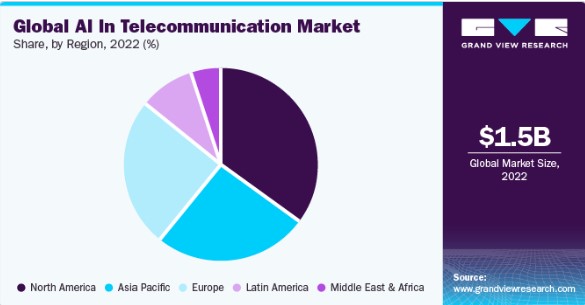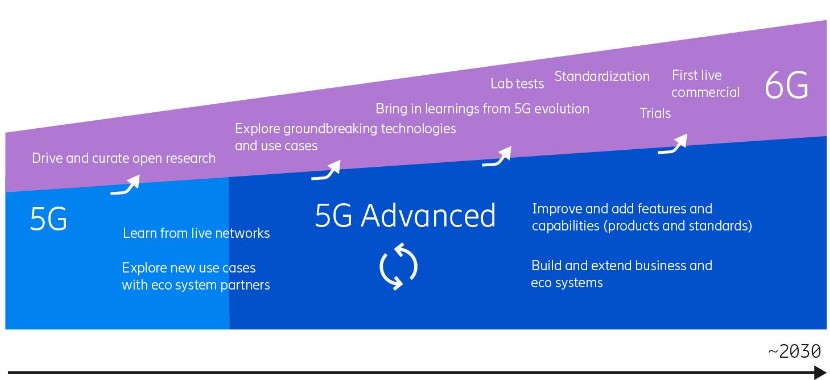Introduction
While it’s true that advancements in modern communication technologies have made the exchange of knowledge and information faster than ever before, they have also opened up the gates for the spread of fake news and misinformation. With everything from fake news to deepfake videos cluttering our feeds, there’s a real need to sift through the noise. In some cases, such fake news can even be life-threatening.
For example, during the COVID-19 pandemic, many people were turned against vaccinations because of the spread of misinformation about them. There were false rumours spread saying that the vaccinations caused autism. The World Health Organization (WHO) even even coined the term ‘infodemic’ to describe it. Incidents like these prove that we need a more robust and reliable system to combat the spread of fake news and misinformation, especially during a crisis.
We can reduce the impact of fake news and misinformation by using artificial intelligence (AI) innovations in our communication systems. By getting smart with how we monitor TV and social media content, we can ensure what we share and consume is not just real but reliable. The importance of this field of work is clear and the global market value of AI in telecommunication is projected to rise to $11.30 billion by 2030.

This article discusses various AI innovations in the communication sector. We’ll explore how AI-enabled technologies like generative AI, computer vision, GPU acceleration, and IoT edge computing are being applied. We’ll also briefly examine the associated challenges and their future. Let’s get started!
6G Takes AI to the Next Level
What if, in the not-so-distant future, we livestream your favourite football game at the highest resolution possible with zero latency? This is precisely what 6G technology offers. It is far superior to current technologies like 5G. For instance, 5G speeds can reach up to 20 Gbps with low latency. In contrast, 6G could achieve 1 Tbps with ultra-low latency.

So, how is 6G relevant for AI innovations in smart communication? 6G’s arrival amplifies the capabilities of AI in smart communication. With its ultra-low latency and blazing-fast speeds, 6G supports real-time data processing and decision-making at the network edge using IoT. Using IoT edge computing, we can analyse information instantly, without waiting for data to travel to a centralised location and back.
For example, consider a scenario where IoT devices are deployed along highways to monitor traffic conditions. In emergencies like a car accident, these devices can detect the situation and relay critical information to nearby vehicles and emergency response teams in real-time. With 6G’s high-speed connectivity and low latency, this data can be transmitted instantaneously, allowing for swift response and potentially saving lives.
This seamless integration of IoT and 6G technology shows how AI innovations in smart communication can be accelerated to enhance safety and efficiency in our daily lives. Companies like Ericsson are researching AI in 6G networks in collaboration with entities like Hexa-x.
The Influence of Generative AI on Traditional Media
As the world becomes more and more digital every day, the field of journalism is also evolving with the help of AI technologies. One of the most promising developments in this area is using generative AI to create news. It combines multiple technologies like natural language processing, machine learning, and deep learning algorithms.
Generative AI news readers can automate the news production process. They analyse vast data from various sources, understand content like humans, and identify trends. These AI systems can then generate news stories that are coherent and relevant. These systems can even generate human-like reporters to deliver the news stories!
AI-generated news anchor, Zae-In, is a great example of this. She has a polished appearance and seamlessly delivers news reports. Powered by Pulse9’s advanced Deep Real AI technology, Zae-In combines human-like facial expressions and gestures to appear very real.

As the adoption of AI becomes more widely accepted, AI-driven news anchors like Zae-In will become integral parts of journalism. Their availability round-the-clock, consistent performance, and multilingual communication capabilities make them ideal for delivering news.
Benefits of Integrating AI with Traditional Media Platforms
Similar to Zae-In, advanced AI technologies offer traditional media outlets many benefits in content creation and various tasks. By speeding up content production and automating functions like data analysis and fact-checking, AI streamlines operations for journalists. It frees up time for journalists to concentrate on investigative reporting.
Here are some more benefits of integrating AI with traditional media platforms:
- Improved accuracy with advanced data analysis tools.
- Personalised content delivery for increased audience engagement.
- Real-time insights help journalists to respond swiftly to trends.
- Expanded coverage through multilingual and multi-format content creation.
AI Innovations in Social Media
From automatic content moderation to personalised ad recommendations, AI is changing how we interact and experience social media in many ways. One important application of AI in social media is using computer vision to detect and analyse visual content automatically. Computer vision involves developing algorithms to analyse and extract meaningful information from digital images or videos, similar to how humans perceive and understand visual information.
Computer vision can be used on social media platforms for content moderation, image recognition, and visual search. For example, computer vision can automatically detect and filter out inappropriate or offensive content, helping to maintain a safe and positive online environment for users. Also, computer vision can support features like automatic tagging of photos, object recognition, and image-based search to improve user experience and make it easier to find relevant content.
Behind the scenes, GPU acceleration can help make these computer vision applications possible without compromising performance. GPU acceleration uses the parallel processing power of graphics processing units (GPUs) to speed up complex computations involved in computer vision tasks. By offloading these tasks to GPUs, social media platforms can process large amounts of visual data efficiently and in real time.
How Do Different Social Media Platforms Use AI?
Let’s take a closer look at how different social media platforms are using AI.
Facebook (Meta)
Meta is using advanced technologies like GPU acceleration and computer vision to build its version of a metaverse. Facebook’s Metaverse combines virtual and augmented reality into one immersive digital world. This effort sets new standards for online spaces where people can come together.

Users can explore artificial settings and interact with each other through unique, customisable avatars. This project aims to change how we connect, play, and work on the internet, making it more interactive and engaging. It’s all about creating a space where socialising, entertainment, and work can happen in new and exciting ways without the physical world’s limits. The metaverse is slowly becoming a reality, especially with cutting-edge technology like Apple’s Vision Pro VR headset.
LinkedIn uses AI algorithms to suggest customised job recommendations. By going through vast datasets, LinkedIn’s AI system can analyse user’s profiles, skills, and job preferences to suggest suitable job openings. LinkedIn’s AI algorithms can also identify and suggest potential connections based on users’s professional networks, industry affiliations, and shared interests. This capability enables the user to expand their professional circle and create new and meaningful connections within their field.
Users’ feeds on LinkedIn are also customised with the help of AI. AI-powered algorithms can help organise users’ feeds to display posts, articles, and updates suited to their professional interests and activities by analysing users’ online behaviour, interactions, and preferences across the platform.
Snapchat
Snapchat uses computer vision technologies to provide interactive and engaging features to users. These algorithms track users’ facial features and overlay a variety of filters, masks, and special effects that integrate with their movements and facial expressions in real time. Snapchat’s AI technology can also recognise objects in photos and videos, enabling features like augmented reality lenses that interact with the environment.
Looking Ahead to the Future of Smart Communication
The future of AI in smart communication is shaping up to be very exciting. OpenAI, known for its contributions to advancing and popularising generative AI technologies, recently announced a text-to-video generation tool named Sora. Sora can help you generate a 1-minute video from a textual user prompt. Technologies like this pave the way for more efficient and faster news production processes. Just imagine, based on a few sentences Sora could create videos to telecast while narrating a news story!
Also, AI-facilitated personalised news content is very much possible in our future. Personalised news content would boost user engagement and satisfaction. It would foster a stronger connection between news providers and their audiences. At the same time, it would open up avenues for revenue diversification. This could include subscription services, content licensing, and sponsored content. These opportunities would offer media companies contemporary monetisation strategies, and that is just scratching the surface of the future of AI in smart communication.
Challenges in AI-Enhanced Social Media
Despite the interesting advancements that AI can bring to our communication channels, there are concerns regarding transparency, accountability, job displacement, and potential biases in automated content creation. These concerns require careful human oversight and ethical considerations.
Meta decided to shut down its computer-vision-based facial recognition system on Facebook due to growing concerns about the societal implications of this technology. Such technologies raise privacy concerns because they allow the tracking and identification of individuals without their consent.
Deepfake videos or images are another harmful side effect of advancements in AI. Anyone’s data, including images and videos available on the internet, can be misappropriated to create content without their consent.

While these challenges are significant, AI can also be part of the solution. AI solutions can detect deepfake videos and images, which, despite being sophisticated, often contain flaws that an observant system can spot. Moreover, experts can better manage these challenges, and that’s where TechnoLynx can help.
What We Can Offer as TechnoLynx
At TechnoLynx, we specialise in delivering custom, innovative AI solutions. We understand the difficulties of integrating AI into various sectors. Our expertise spans a range of technologies, including generative AI, computer vision, GPU acceleration, and IoT edge computing. We focus on applying these advanced AI capabilities to ensure privacy, manage and analyse extensive data sets, and address ethical considerations.
We offer precise AI-driven software solutions designed to solve specific business issues. We aim to push the boundaries of innovation while ensuring adherence to stringent ethical standards. For more information, please do reach out to us at TechnoLynx.
Conclusion
AI improves how we communicate and spread news, from personalised recommendations on social media like LinkedIn to AI-generated news readers. However, integrating AI solutions in the communication sector presents a few challenges.
Addressing these challenges in the communication sector requires a collaborative approach among all stakeholders, including an AI solution provider that fully understands and addresses your concerns. At TechnoLynx, we specialise in providing customised AI solutions to navigate these challenges effectively, pushing the boundaries of innovation while ensuring safety and compliance.
Sources for the images:
- Amelia Tait (2023) ‘Here is the news. You can’t stop us’: AI anchor Zae-In grants us an interview.
- Ericsson (n.d.) Follow the journey to 6G.
- Grand View Research (n.d.) AI In Telecommunication Market Trends.
- Team THC (2022) Meta Doubles Down On the Metaverse.
- The Maverick Lab (2024) Video Personalization Using Deepfake Technology: Are Deepfakes All Evil?.
References:
- BYJU’S, n.d. 6G Network UPSC Notes.
- Ericsson, n.d. 6G research to support the creation of the network of 2030.
- Forbes, 2017. The Inner Workings Of Snapchat’s Faceswap Technology.
- Grand View Research, 2021. Artificial Intelligence in Telecommunication Market Size, Share & Trends Analysis Report By Deployment (Cloud, On-premise), By Application (Customer Analytics, Network Security), By Technology (Machine Learning, Natural Language Processing), And Segment Forecasts, 2022 - 2030.
- Hexa-X, n.d. Hexa-X.
- Lalmuanawma, S., Hussain, J. & Chhakchhuak, L., 2022. Applications of machine learning and artificial intelligence for Covid-19 (SARS-CoV-2) pandemic: A review. Chaos, Solitons & Fractals, 139, p.110059.
- Lunden, I., 2023. LinkedIn goes big on new AI tools for learning, recruitment, marketing, and sales, powered by OpenAI. TechCrunch.
- Meta, n.d. Welcome to the Metaverse.
- OpenAI, n.d. Sora by OpenAI.
- The Hans India, 2021. Facebook to shut down facial recognition feature.
- World Health Organization, n.d. Understanding the infodemic and misinformation in the fight against COVID-19.












